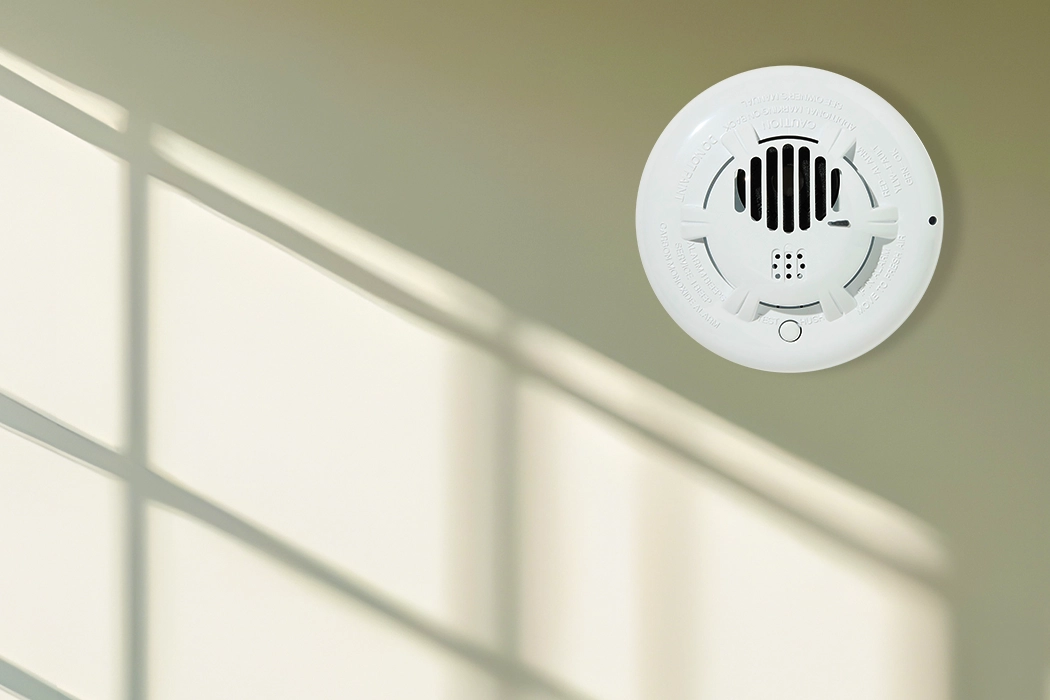How Often to Replace Your Carbon Monoxide Detectors

It’s more often than you think.
For those who enjoy fuel-burning appliances in their homes, these reliable and efficient devices have a long history of providing convenience and the comfort of warmth, particularly in colder climate conditions and in many older homes. While these devices are useful during a harsh cold, they can also produce a risk with a deadly gas called carbon monoxide.
If you watch the local news, you’ve probably seen at some point a dramatic piece along these lines: “It’s an odorless, colorless gas. It can collect undetected in enclosed spaces. In the right concentration, it’s deadly. Could it be lurking in your home?”
There are over 420 carbon monoxide deaths in the United States annually. Sounds pretty scary, right? And it is — carbon monoxide (CO) poisoning is no joke, so it’s no wonder carbon monoxide detectors have become so popular. Let’s review what carbon monoxide is, as well as what causes it.
What is carbon monoxide, and what causes it?
Carbon monoxide (CO) is a byproduct of fuel burning. In simpler terms, CO is produced whenever a material burns. Homes with fuel-burning appliances or attached garages are more likely to have CO problems.
Fuel-burning appliances are more common in colder climates and older homes, so if you live somewhere cold, you likely have quite a few and might be at higher risk. If you’re not familiar, fuel-burning appliances include water heaters, fireplaces, automobiles, wood stoves, clothes dryers, boilers or furnaces, or lawn equipment and gas-powered tools.
How do I know if I’m exposed to carbon monoxide?
In short, you likely won’t know unless you have a detector. You might start to notice some symptoms, but it’s easy to dismiss those as something else, such as the flu. That’s why it’s important to install and maintain carbon monoxide detectors in your home.
If you do start to notice any symptoms (lethargy, headache, dizziness flu-like symptoms that come on unexpectedly, etc.) and otherwise have been feeling healthy, get outdoors immediately. If the symptoms subside, it might be carbon monoxide poisoning. If you suspect this, it’s time to call the professionals for help. You’ll want to get examined by a doctor, and upon receiving an all clear, solve the issue in your home.
How often should I replace my carbon monoxide detectors?
Typically, you should replace your detectors once every 5 to 7 years, but there’s a little more to it than that. Different alarms have their own recommended replacement ages which can be obtained from product literature or from the manufacturer.
Most of the time, these detectors will start emitting a chirping sound at the end of their life that’s different than the chirping sound that means “change my battery.” Thus, most of the time, you only need to replace them when you hear the chirp.
Newer, digital models tend to have a digital display of some kind, allowing you to discern when they are malfunctioning. The good news is that these things are designed to self-monitor and let you know if they detect a problem within. Just in case, you should check the battery twice a year and test it regularly using the test/reset button. This will ensure the device is working properly when you need it most.
In addition to replacing your carbon monoxide detector, the Centers for Disease Control and Prevention recommend the following preventative measures:
Do install a battery-operated or battery back-up CO detector in your home. Check or replace the battery when you change the time on your clocks each spring and fall. If the detector sounds leave your home immediately and call 911.
Do have your heating system, water heater and any other gas, oil, or coal burning appliances serviced by a qualified technician every year.
Do seek prompt medical help if you suspect CO poisoning and are feeling dizzy, light-headed, or nauseated.
Don’t use a generator, charcoal grill, camp stove, or other gasoline or charcoal-burning device inside your home, basement, or garage or near a window.
Don’t run a car or truck inside a garage attached to your house, even if you leave the door open.
Don’t burn anything in a stove or fireplace that isn’t vented.
Don’t heat your house with a gas oven.
Don’t use a generator, pressure washer, or any gasoline-powered engine less than 20 feet from any window, door, or vent. Use an extension cord that is more than 20 feet long to keep the generator at a safe distance.
What if I’m not sure how to proceed?
If you don’t want to tackle installing carbon monoxide detectors yourself, or if you suspect something might be wrong with the ones you have, you can call a local service person to assist. If you have a monitored home security system, the technician who installs and maintains that system may be able to help with your carbon monoxide detectors, too. And if you’re interested in monitored home security with life safety device options, get a free quote from Brinks Home™ right away.



